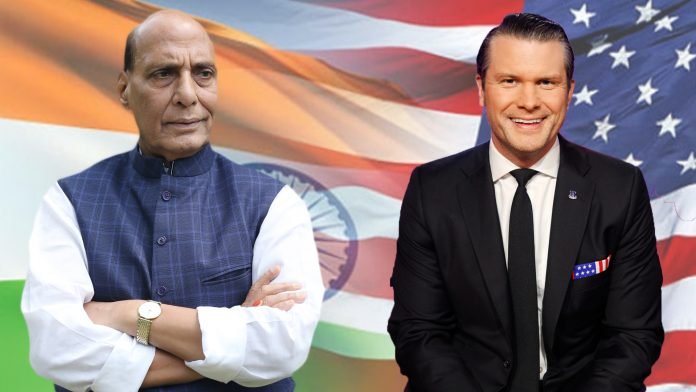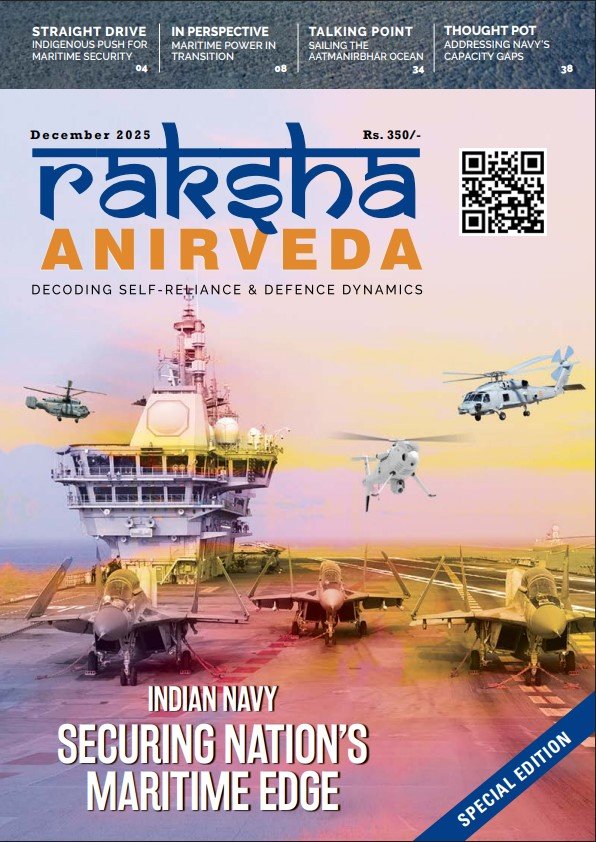India and the United States recently announced the inking of a ten-year defence cooperation framework that would set the future of the ties between the two countries. This was followed by the announcement to speed up the execution of other big-ticket projects. The announcement of such a critical agreement signals the continuation of the progress made during Prime Minister Narendra Modi’s visit to the US in February this year. The announcement of this crucial defence pact is a sign not just of the changing nature of Indo-US ties, but also signals a crucial fact – India’s balancing act when it comes to national security considerations.
Since 2014, the US has emerged as one of the largest defence partners of India, supplying it with cutting-edge weapons and state-of-the-art technology. Apache AH-64 choppers, Chinook multi-utility helicopters, and S777 ultra-light howitzers are some of the notable examples. The new defence framework envisages the joint production of the Javelin anti-tank missiles and Stryker armoured vehicles.
The Indo-US defence partnership has been marked by the signing of four foundational agreements: Logistics Exchange Memorandum of Agreement (LEMOA), Basic Exchange & Cooperation Agreement (BECA), Communications Compatibility and Security Agreement (COMCASA), and General Security of Military Information Agreement (GSOMIA). These agreements place India on the list of major defence partners of the USA.
However, India’s defence diplomacy has been a perfect example of a tightrope balancing act.
India’s defence cooperation pact with the United States is a sign of the changing nature of Indo-US ties, and it signals a crucial fact: India’s balancing act when it comes to national security considerations
Diversifying Choices
A key part of India’s defence equations is Russia. Since India’s Independence, Russia has been a trusted and reliable partner of India. Russian weapon platforms played a critical role in helping India during its wars with Pakistan, and Russia provided diplomatic and overt security assistance to India during the 1971 war.
India’s defence, therefore, has a strong Russian base with major weapon platforms like fighter jets, starting from the MiG-21 to the Sukhoi-30. Further, many of the small arms in India’s weapons arsenal bear a Russian imprint. Therefore, maintaining close ties with Russia has always been in favour of New Delhi.
The end of the Cold War, however, brought about changed geopolitical conditions. The conditions then necessitated India’s gradual opening up. This involved improving ties with the West.
India, therefore, forged strong defence partnerships with two other countries – Israel and France. While Israel provided drones, anti-tank missiles like the Spike, France has emerged as one of the most consequential defence partners of India in Europe. From Mirage-2000 to the Scorpene submarines, France has been a reliable partner of India.
However, given India’s historically closer ties with Russia in the security realm, the West, led by the US, has always had discomfiture with India. The subtle nature of threats under legislations like Countering America’s Adversaries Through Sanctions Act CAATSA or making their displeasure felt at New Delhi’s refusal to condemn Russia and reduce its ties with it demonstrates the importance India attaches to Russia.
Ramping up oil purchases from Russia at highly discounted rates while not succumbing to Western pressures highlights the maturation of India’s strategic autonomy. The word sovereignty in the preamble of the Indian Constitution means that India is free from both internal and external pressures and has the right to take whatever decision suits it to defend its interests.
India’s balancing act on the diplomatic-security front exemplifies this idea.
Since Independence, Russia has been India’s reliable partner. The end of the Cold War changed geopolitical conditions. This necessitated India’s gradual opening up, which involved improving ties with the West
No Compromise on Terrorism
A key aspect of India’s security policy is ‘no compromise on terrorism’. Terrorism has emerged as one of the most dangerous problems that afflict humanity. While many states find it convenient to use terrorism as an instrument of state policy, India’s stand on terrorism has been made very clear – terrorism cannot be tolerated under any manifestation or nomenclature. In conducting Operation Sindoor, India made it very clear that it will no longer allow the torchbearers of state-sponsored terrorism to have a field day.
During his visit to the US to attend the Quad foreign ministers’ meeting, External Affairs Minister Dr S Jaishankar made it clear that India reserves the right to respond punitively to acts of terrorism emanating from foreign soil. He also called on the international community to condemn terrorism in all its forms and manifestations.
The Indian security matrix, both externally and internally, needs a holistic approach. It must incorporate the government, academia, think tank community, and civil society to fortify India’s security needs
Changing Nature of Security
National security in today’s day and age can no longer be ensured through a unilinear approach. Given the multiplicity of non-state actors in international politics, national security today demands a nuanced and multifaceted approach that integrates not just the governmental machinery but also ropes in the civil society and private sector.
Today is the age of hybrid warfare, wherein the lines between domestic and foreign peace and war have been blurred. The Indian security matrix, both externally and internally, needs to be ready. A holistic approach, incorporating the government, academia, think tank community, and civil society, must be undertaken to fortify India’s security needs.
–The writer is currently working as a Research Associate at Defence Research and Studies (dras.in) and is a columnist. The views expressed are personal and do not necessarily reflect the views of Raksha Anirveda






